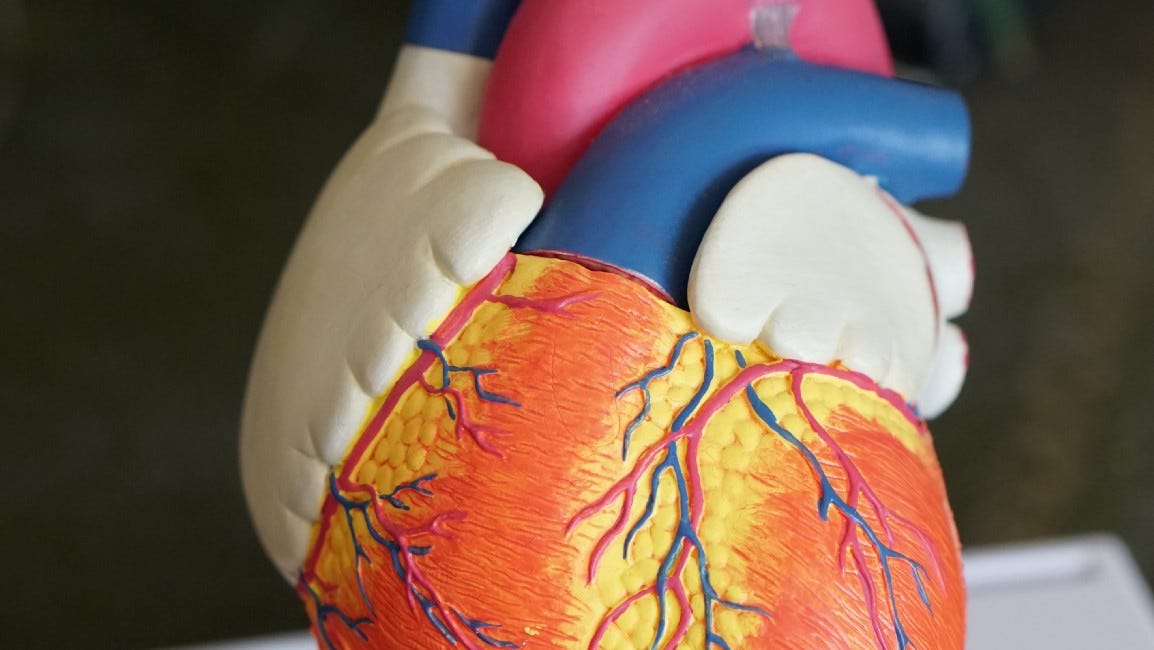Understanding How Cholesterol Accumulates In Our Body
The dynamic equilibrium behind the consumption and the excretion mechanisms of cholesterol is poorly explained these days.
The whole problem with health and healthcare these days is that things can get so complicated such that we have no idea how to make any head or tail out of it.
The thing is that a lot of common health issues can be simplified for the common person - but simplification takes time, and it doesn’t benefit the healthcare professional to explain all of that, because we are all aware of the fact that time is money.
For example, what does “high cholesterol” even mean?
It’s more convenient for the doctor to prescribe a statin to “reduce cholesterol”, isn’t it?
At least, that’s what people with high cholesterol are told. Though there also is the fear that statins can cause dementia:
Do Statins Really Cause Dementia?
Do statins really cause dementia? There have been many differing opinions about what they do. Some claim that it may help to protect one from dementia, while others claim that it may accelerate the onset of dementia. However, recent research suggests that those who do take
There are ways to better understand what’s going on.
In fact, we can look at some useful analogies to understand what’s going on.
For example, we have the idea of growing our wealth - and we know that our account balances can grow if and only if our income is greater than our output.
Because if I were to be getting $10 added to my bank account every day and deducting $5 from it for my expenses each day, I’d have a positive accumulation of $5 in my account every day.
Meaning that the net amount going into my account must be positive.
If my expenses rise to $7, my accumulation would be reduced to $3; and if my expenses rise to $10, my bank account would be at equilibrium, where what goes in equals what comes out.
Can we apply that logic to the cholesterol in our blood?
Obviously, yes. Our liver synthesises fresh cholesterol from our food - that’s what goes into our body.
Our intestines get rid of waste cholesterol as bile salts/acids via the faecal matter - that’s what goes out of our body.
Ideally, what goes in should be balanced with what goes out.
We can control what goes in based on the foods that we consume - but what about what goes out? We can, too, provided we’re taking regular dumps - but the thing is, are we taking regular dumps?
Constipation is regarded as an epidemic in the United States and also affects 17% of the population in Europe. It’s not something that very few people experience, but there are many people out there who experience irregular dumps, and that can also have a cascading effect on how well they can manage the dynamic equilibrium of the cholesterol in their blood.
Because if constipation is a problem to me, then that means that I cannot excreting their waste cholesterol as bile salts out of my body as efficiently as they ought to be excreted, which results in the output rate of cholesterol decreasing over time.
The problem is that these bile salts, when left in the intestines for a while (especially with the inefficient excretion of faecal matter because of constipation), can be re-absorbed back into the blood. Such that the liver can then eventually process them back into cholesterol, and feed them into the cholesterol carriers, or the lipoproteins.
What happens when we end up stuffing the lipoproteins with more cholesterol?
Middle school chemistry will tell us that as oil floats on water, it has a lower density than water. We can see that when we try to mix cooking oil with tap water in a glass.
Cholesterol is a fatty molecule. Oils are fats.
The majority of blood is water.
Meaning that if we were to mix blood and cholesterol together in a test tube, we’d see cholesterol floating on the surface of the blood.
Cholesterol would have a lower density than blood.
So what happens when we pack a lipoprotein fuller and fuller with cholesterol?
Would that not cause a DECREASE in the density of the lipoprotein molecule?
Therefore, would it not be known as a low density lipoprotein (LDL)?
The thing is that LDL is not “bad” cholesterol.
It is a carrier that is full of cholesterol, which is needed for the synthesis of new cells and the repair of older cells in our body.
LDL transports cholesterol out of the liver and to the cells.
When the cells take in their necessary cholesterol dosage, the lipoprotein loses some of its cholesterol cargo, and its density therefore increases.
Then we’d be looking at a lipoprotein of higher density, which we can term as a high density lipoprotein (HDL).
When the synthesis of fresh cholesterol is balanced out by the excretion of waste cholesterol, we’d have a certain ratio between LDL and HDL.
However, when our excretion rates suffer, we’d end up re-absorbing those bile salts, which get re-processed back into cholesterol, and the liver then stuffs more of this re-processed cholesterol into any available lipoprotein carriers.
Over time, would more HDL carriers “morph” into LDL carriers as they’re stuffed fuller and fuller?
Then when we go to the doctor for our annual medical checkups, all the doctor would need to do is to administer a blood test to determine how much HDL and LDL we have in our blood… and from there determine that we have the symptom of “high cholesterol” because we have too much LDL in our blood.
And that’s the thing that doctors prescribe statins for. But is cholesterol really the heart of the problem?
For more information about what all this accumulated cholesterol can do to our bodies, do feel free to visit:
The Problem With Cholesterol Accumulation In Our Body.
This piece is a continuation from It Ain’t Really Just The Cholesterol That Contributes To Heart Disease: There are certain things in life that we would want to see increases in. Financially, we will always appreciate an increase in our bank accounts. Emotionally, we will always appreciate an increased outpouring of love from our loved ones. Mentally, we will always appreciate learning new content that is relevant to us.
To understand how cholesterol accumulation can lead to heart disease, which is actually a problem with the immune system going dysfunctional in one’s body, do feel free to check out:
Now, Seriously, What's So Tricky About Cholesterol?
This article is the final part of a 3 part miniseries. The first 2 parts can be found at: Medical science has been talking about cholesterol and its links to heart disease for years. People who are at risk of heart failure are invariably prescribed medicines such as
Cholesterol accumulation is a digestive system issue that gradually ends up encompassing immune system issues as well. Hence our digestive system and our heart are both important aspects to focus on!
Do feel free to check out What Nutrients Support Digestion And Detox In Our Body?and 10 Nutrients That Support A Healthy Heart to see how our diet can better support our digestive system and our cardiovascular system.
Also, do feel free to share this article and hit the “subscribe” button to get more updates about the science concepts in nutrition and health, all deconstructed nicely for your convenient perusal!







